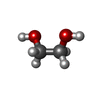+Search query
-Structure paper
| Title | Structure of a volume-regulated anion channel of the LRRC8 family. |
|---|---|
| Journal, issue, pages | Nature, Vol. 558, Issue 7709, Page 254-259, Year 2018 |
| Publish date | May 16, 2018 |
 Authors Authors | Dawid Deneka / Marta Sawicka / Andy K M Lam / Cristina Paulino / Raimund Dutzler /   |
| PubMed Abstract | Volume-regulated anion channels are activated in response to hypotonic stress. These channels are composed of closely related paralogues of the leucine-rich repeat-containing protein 8 (LRRC8) family ...Volume-regulated anion channels are activated in response to hypotonic stress. These channels are composed of closely related paralogues of the leucine-rich repeat-containing protein 8 (LRRC8) family that co-assemble to form hexameric complexes. Here, using cryo-electron microscopy and X-ray crystallography, we determine the structure of a homomeric channel of the obligatory subunit LRRC8A. This protein conducts ions and has properties in common with endogenous heteromeric channels. Its modular structure consists of a transmembrane pore domain followed by a cytoplasmic leucine-rich repeat domain. The transmembrane domain, which is structurally related to connexin proteins, is wide towards the cytoplasm but constricted on the outside by a structural unit that acts as a selectivity filter. An excess of basic residues in the filter and throughout the pore attracts anions by electrostatic interaction. Our work reveals the previously unknown architecture of volume-regulated anion channels and their mechanism of selective anion conduction. |
 External links External links |  Nature / Nature /  PubMed:29769723 PubMed:29769723 |
| Methods | EM (single particle) / X-ray diffraction |
| Resolution | 1.8 - 7.94 Å |
| Structure data |  EMDB-4361: EMDB-4362: Cryo-EM density of the pore domain of homomeric mLRRC8A volume-regulated anion channel at 3.66 A resolution EMDB-4366: Cryo-EM density of homomeric mLRRC8A volume-regulated anion channel at 5.01 A resolution EMDB-4367: Cryo-EM density of full-length homomeric mLRRC8A volume-regulated anion channel at 4.25 A resolution  PDB-6fnw: |
| Chemicals |  ChemComp-EDO:  ChemComp-HOH: |
| Source |
|
 Keywords Keywords | MEMBRANE PROTEIN / ion channel / leucine-rich repeat domain / Chloride channel / Swelling-activated / VSOAC / Leucine-rich repeat |
 Movie
Movie Controller
Controller Structure viewers
Structure viewers About Yorodumi Papers
About Yorodumi Papers










